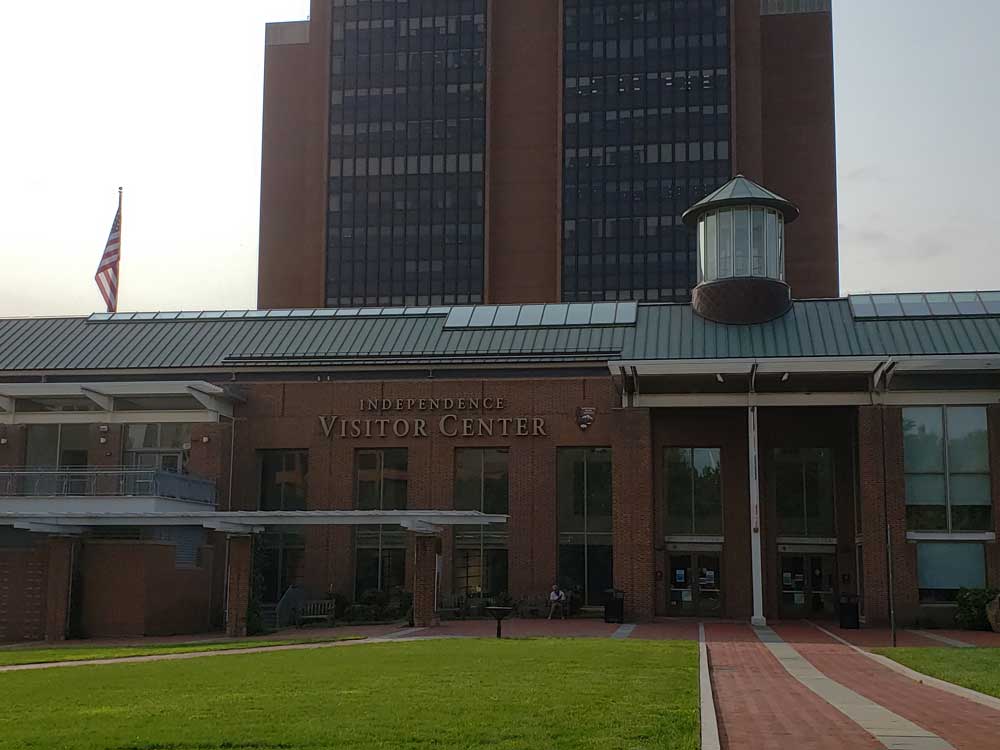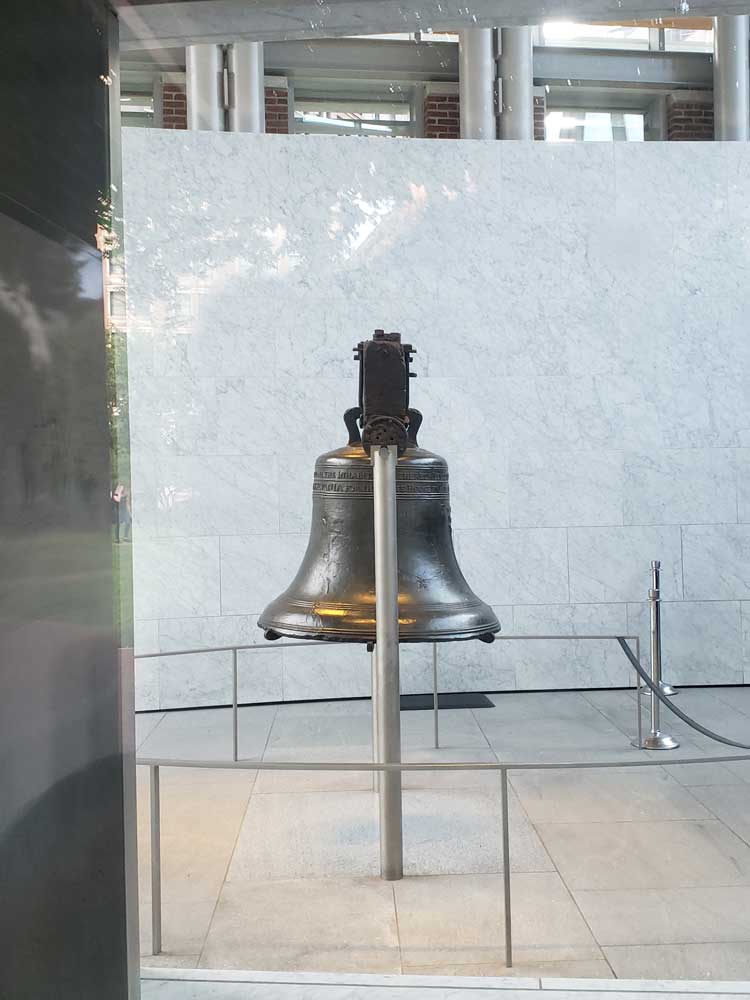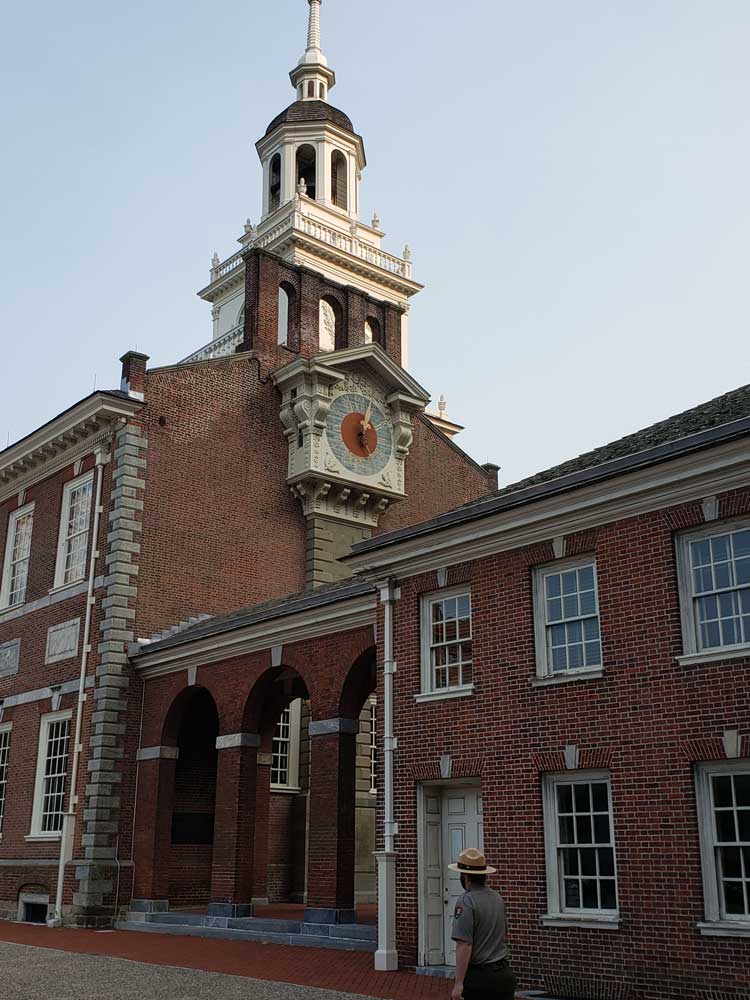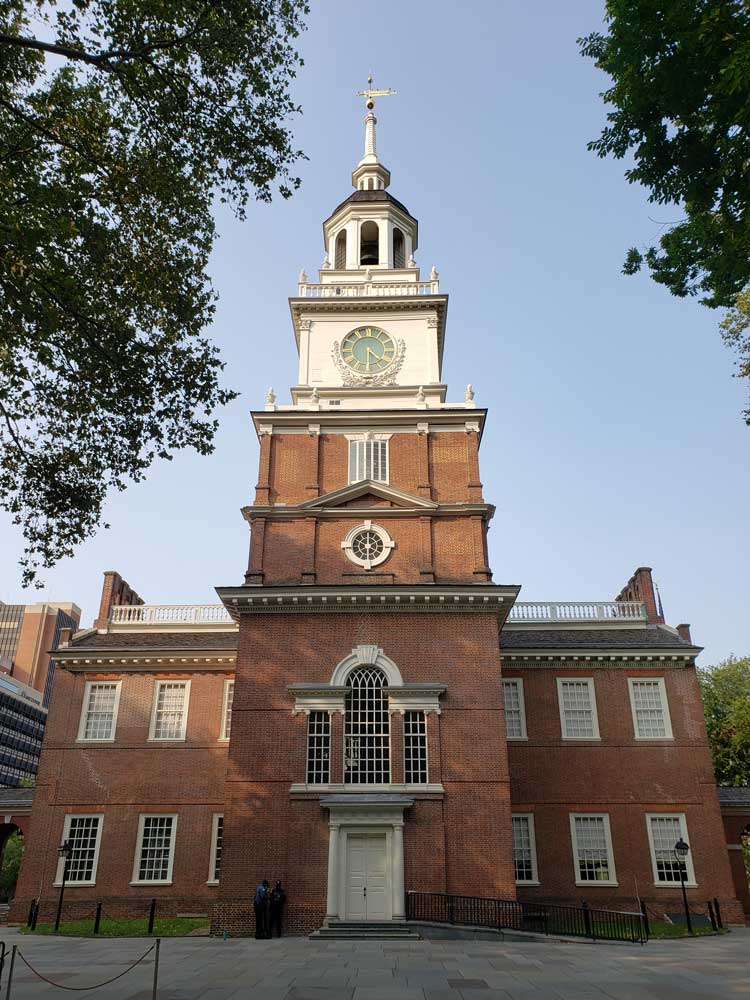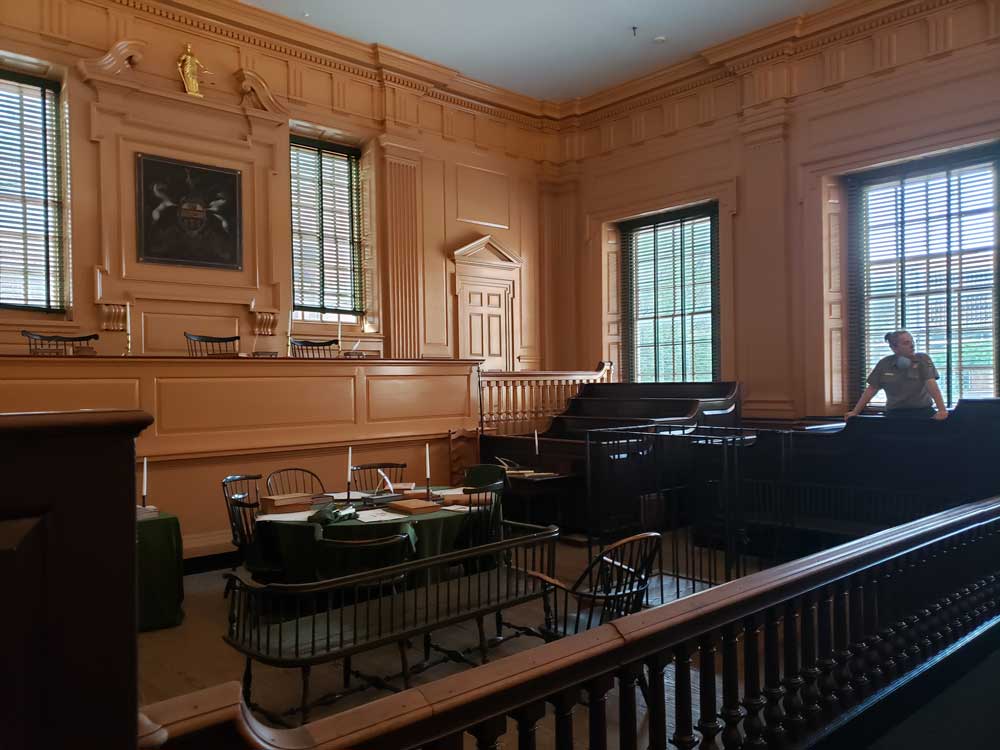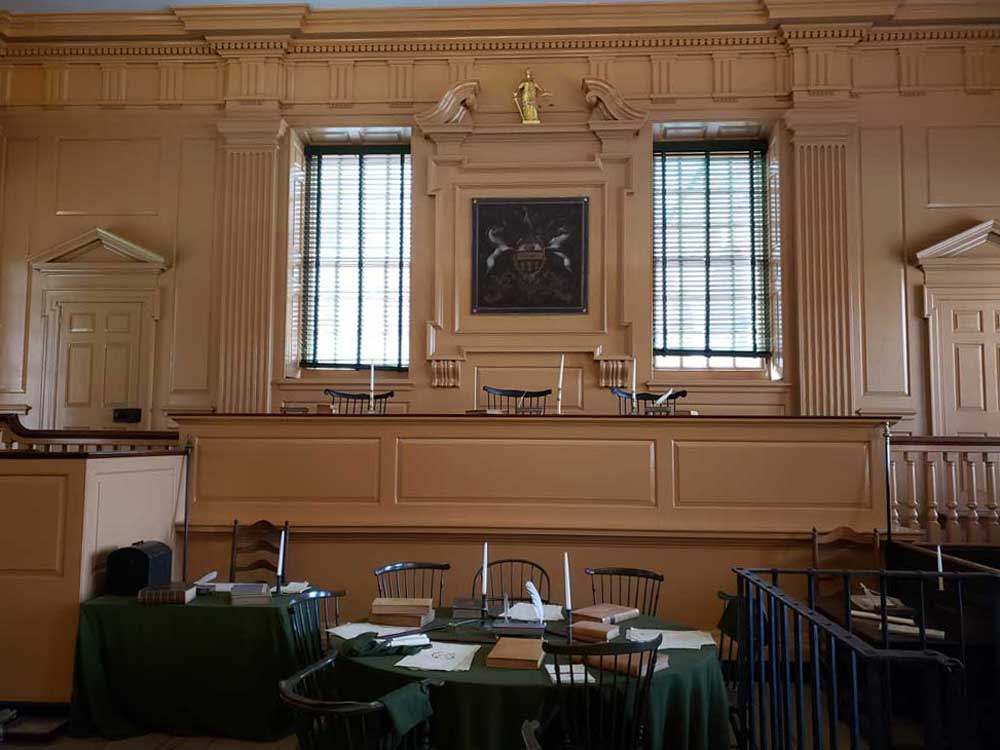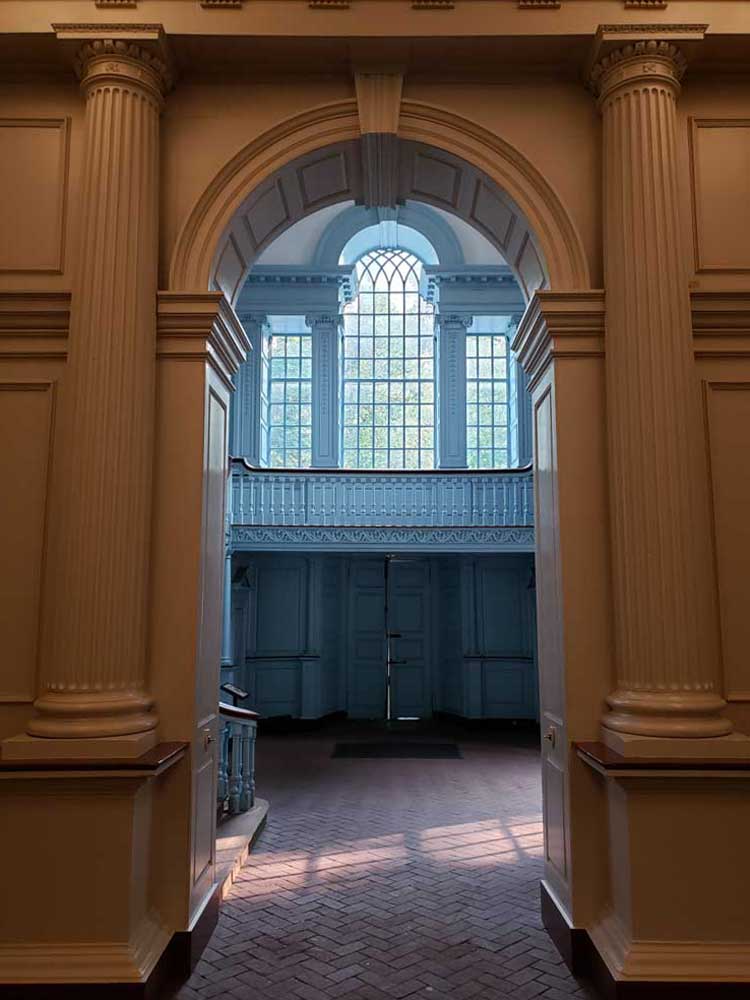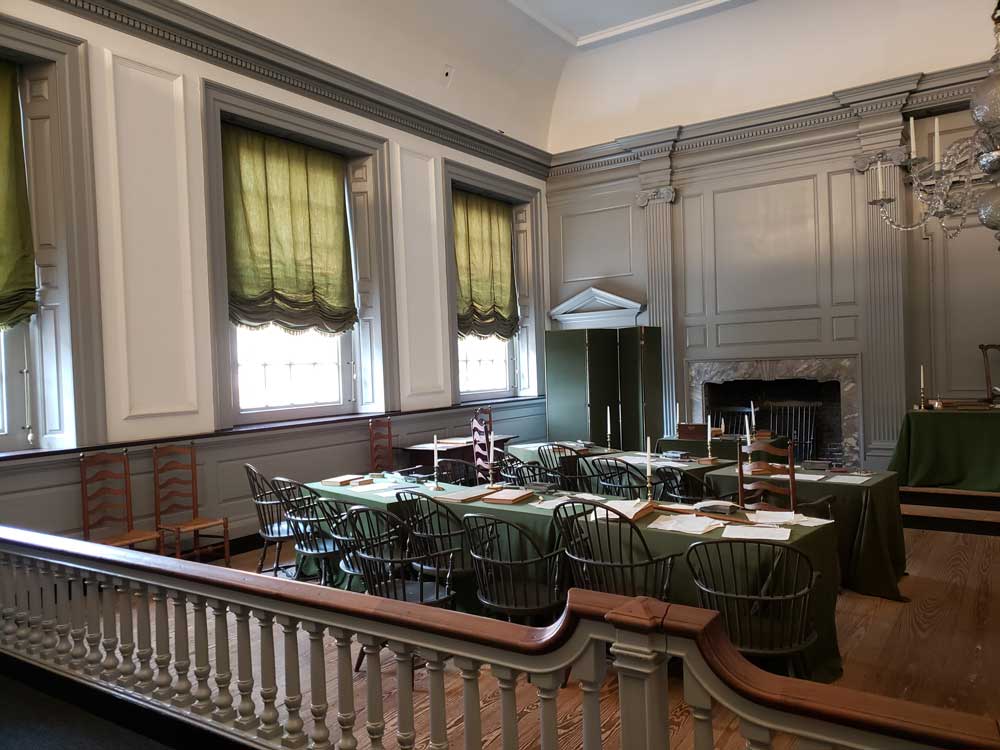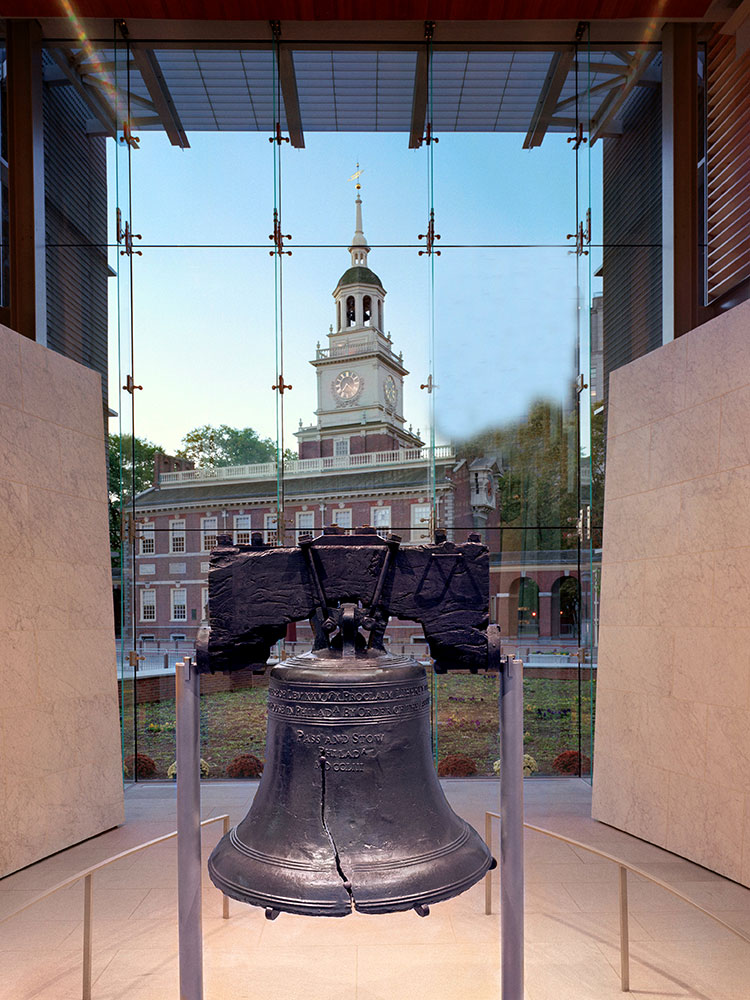Historic civic building in which both the United States Declaration of Independence and the United States Constitution were debated and adopted
General Information
No tickets are required. Entrance to Liberty Hall is by tour only, first-come, first-served. Tours begin every 15 minutes
Head south on S 15th St toward S Penn Square. Use the left lane to turn slightly left onto S Penn Square. Use the middle lane to stay on S Penn Square. Use the right 2 lanes to turn right onto Market St. Turn right onto S 6th St/S Independence Mall W. Destination will be on the left.
Independence Hall is a historic civic building in Philadelphia in which both the United States Declaration of Independence and the United States Constitution were debated and adopted. The structure forms the centerpiece of the Independence National Historical Park and has been designated a UNESCO World Heritage Site.
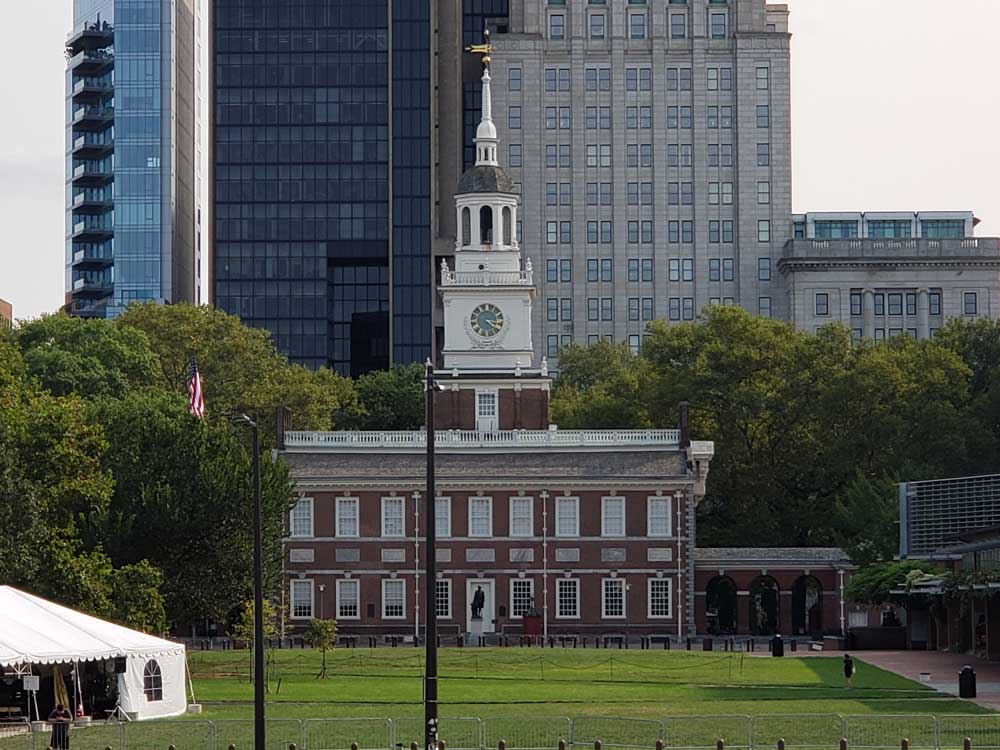
The building was completed in 1753 as the Pennsylvania State House, and served as the capitol for the Province and Commonwealth of Pennsylvania until the state capital moved to Lancaster in 1799. It became the principal meeting place of the Second Continental Congress from 1775 to 1783 and was the site of the Constitutional Convention in the summer of 1787.
Independence Hall touts a red brick facade, designed in Georgian style. It consists of a central building with belltower and steeple, attached to two smaller wings via arcaded hyphens. The highest point to the tip of the steeple spire is 168 feet 7+1/4 inches (51.391 m) above the ground.
The State House was built between 1732 and 1753, designed by Edmund Woolley and Andrew Hamilton, and built by Woolley. Its construction was commissioned by the Pennsylvania colonial legislature which paid for construction as funds were available, so it was finished piecemeal. It was initially inhabited by the colonial government of Pennsylvania as its State House, from 1732 to 1799.
In 1752, when Isaac Norris was selecting a man to build the first clock for the State House, today known as Independence Hall, he chose Thomas Stretch, the son of Peter Stretch his old friend and fellow council member, to do the job.
In 1753 Stretch erected a giant clock at the building's west end that resembled a tall clock (grandfather clock). The 40-foot-tall (12 m) limestone base was capped with a 14-foot (4.3 m) wooden case surrounding the clock's face, which was carved by Samuel Harding. The giant clock was removed about 1830. The clock's dials were mounted at the east and west ends of the main building connected by rods to the clock movement in the middle of the building. A new clock was designed and installed by Isaiah Lukens in 1828. The Lukens clock ran consecutively for eight days, "with four copper dials on each side that measured eight feet in diameter and clockworks that ensured sufficient power to strike the four-thousand pound bell made by John Wilbank." The Lukens clock remained in Independence Hall until 1877.
The acquisition of the original clock and bell by the Pennsylvania Colonial Assembly is closely related to the acquisition of the Liberty Bell. By mid-1753, the clock had been installed in the State House attic, but six years were to elapse before Thomas Stretch received any pay for it.
The building was renovated numerous times in the 19th and 20th century. The current interior is a mid-20th-century reconstruction by the National Park Service with the public rooms restored to their 18th-century appearance.
During the summer of 1973 a replica of the Thomas Stretch clock was restored to Independence Hall.
The second-floor Governor's Council Chamber, furnished with important examples of the era by the National Park Service, includes a musical tall case clock made by Peter Stretch, c. 1740, one of the most prominent clockmakers in early America and father of Thomas Stretch.
Two smaller buildings adjoin the wings of Independence Hall: Old City Hall to the east, and Congress Hall to the west. These three buildings are together on a city block known as Independence Square, along with Philosophical Hall, the original home of the American Philosophical Society. Since its construction in the mid-20th century, to the north has been Independence Mall, which includes the current home of the Liberty Bell.
Liberty Bell
The Liberty Bell, previously called the State House Bell or Old State House Bell, is an iconic symbol of American independence, located in Philadelphia, Pennsylvania. Once placed in the steeple of the Pennsylvania State House (now renamed Independence Hall), the bell today is located across the street in the Liberty Bell Center in Independence National Historical Park. The bell was commissioned in 1752 by the Pennsylvania Provincial Assembly from the London firm of Lester and Pack (known subsequently as the Whitechapel Bell Foundry), and was cast with the lettering "Proclaim LIBERTY Throughout all the Land unto all the Inhabitants Thereof", a Biblical reference from the Book of Leviticus (25:10). The bell first cracked when rung after its arrival in Philadelphia, and was twice recast by local workmen John Pass and John Stow, whose last names appear on the bell. In its early years, the bell was used to summon lawmakers to legislative sessions and to alert citizens about public meetings and proclamations.
Although no immediate announcement was made of the Second Continental Congress's vote for independence—and so the bell could not have rung on July 4, 1776, related to that vote—bells were rung on July 8 to mark the reading of the United States Declaration of Independence. While there is no contemporary account of the Liberty Bell ringing, most historians believe it was one of the bells rung. After American independence was secured, the bell fell into relative obscurity until, in the 1830s, the bell was adopted as a symbol by abolitionist societies, who dubbed it the "Liberty Bell".
The bell acquired its distinctive large crack some time in the early 19th century—a widespread story claims it cracked while ringing after the death of Chief Justice John Marshall in 1835. The bell became famous after an 1847 short story claimed that an aged bellringer rang it on July 4, 1776, upon hearing of the Second Continental Congress' vote for independence. Although the bell did not ring for independence on that July 4, the tale was widely accepted as fact, even by some historians. Beginning in 1885, the city of Philadelphia—which owns the bell—allowed it to go to various expositions and patriotic gatherings. The bell attracted huge crowds wherever it went, additional cracking occurred, and pieces were chipped away by souvenir hunters. The last such journey occurred in 1915, after which the city refused further requests.
After World War II, Philadelphia allowed the National Park Service to take custody of the bell, while retaining ownership. The bell was used as a symbol of freedom during the Cold War and was a popular site for protests in the 1960s. It was moved from its longtime home in Independence Hall to a nearby glass pavilion on Independence Mall in 1976, and then to the larger Liberty Bell Center adjacent to the pavilion in 2003.
Inside the LBC, visitors pass through a number of exhibits about the bell before reaching the Liberty Bell itself. Due to security concerns following an attack on the bell by a visitor with a hammer in 2001, the bell is hung out of easy reach of visitors, who are no longer allowed to touch it, and all visitors undergo a security screening.
Today, the Liberty Bell weighs 2,080 pounds (940 kg). Its metal is 70% copper and 25% tin, with the remainder consisting of lead, zinc, arsenic, gold and silver. It hangs from what is believed to be its original yoke, made from American elm. While the crack in the bell appears to end at the abbreviation "Philada" in the last line of the inscription, that is merely the 19th century widened crack that was filed out in the hopes of allowing the bell to continue to ring; a hairline crack, extending through the bell to the inside continues generally right and gradually moving to the top of the bell, through the word "and" in "Pass and Stow," then through the word "the" before the word "Assembly" in the second line of text, and through the letters "rty" in the word "Liberty" in the first line. The crack ends near the attachment with the yoke.
This article uses material from the Wikipedia articles "Independence Hall", and "Liberty Bell" which are released under the Creative Commons Attribution-Share-Alike License 3.0
Independence Hall National Historical Park Pics
